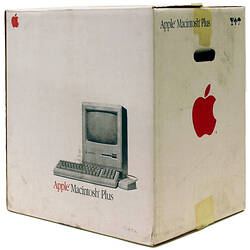The Apple LaserWriter, released in March 1985, delivered text and graphics print quality comparable with that of the professional printing press. This leap forward in quality was accomplished by both hardware and software innovation.
On the hardware side was the laser print process and on the software side, the Adobe Postscript page description language, which supported printing of scalable text and graphics at high resolution. The LaserWriter gave WYSIWYG (What You See Is What You Get) quality so that the page that was seen on the computer screen exactly matched the page printed by the printer. The LaserWriter was ideal for short print runs of documents and ideal for producing a master copy for high print runs when printing was being done by other means.
Early Apple LaserWriters were as expensive as a small car at the time, because another processor was built inside the printer to cope the 8 million dots required to print one page at 300 dots per inch. The processing capability of the printer far exceeded that of the computer's. This meant that the computer from which a document was being printed could continue to be used whilst the printer was processing data for printing and printing it, Additionally, four font families were stored in the printer: Times, Helvetica, Courier and Symbol. If those fonts were used in documents, printing was speedier, as the data processing was done in the printer, based on the stored fonts, and not sent from the computer to the printer based on screen fonts.
Apple Computer, Inc had from the outset produced Macintosh computers that were networkable and did not need an external server, unlike other manufacturers. This allowed sharing of data between computers. When the LaserWriter was released it was thus possible to network multiple computers to the one LaserWriter.
The Apple LaserWriter fits in with the Apple philosophy of empowering people to achieve quality results using outstanding products at affordable prices. Whilst the initial cost of a LaserWriter was only affordable on an institutional basis, it nevertheless significantly was cheaper than contemporary laser printers.
More Information
-
Keywords
-
Authors
-
Article types


